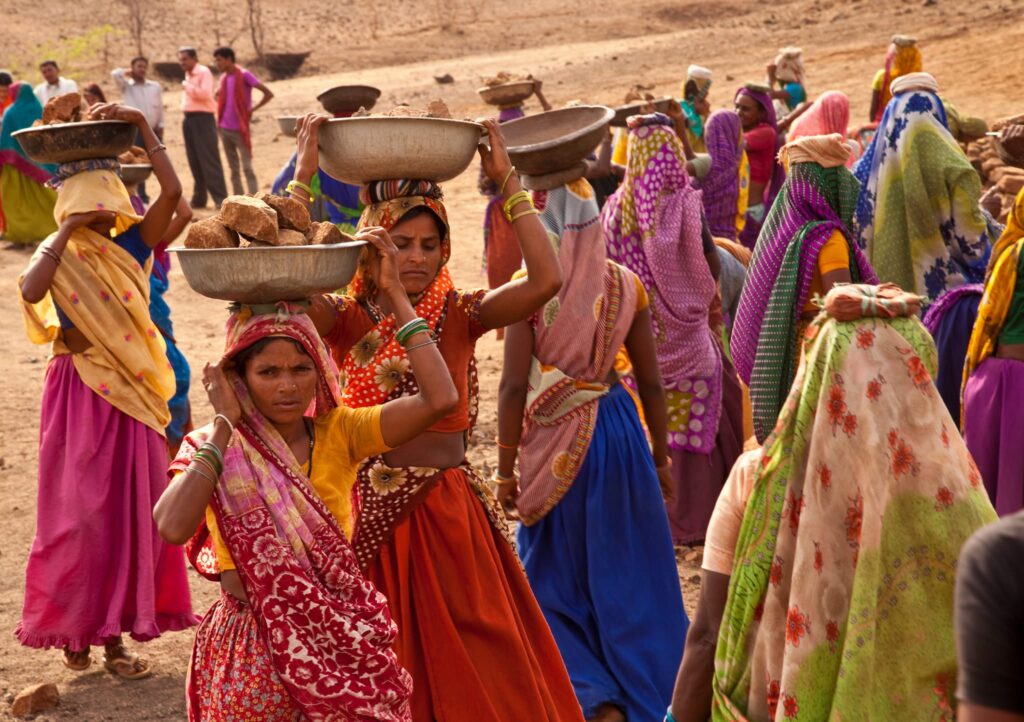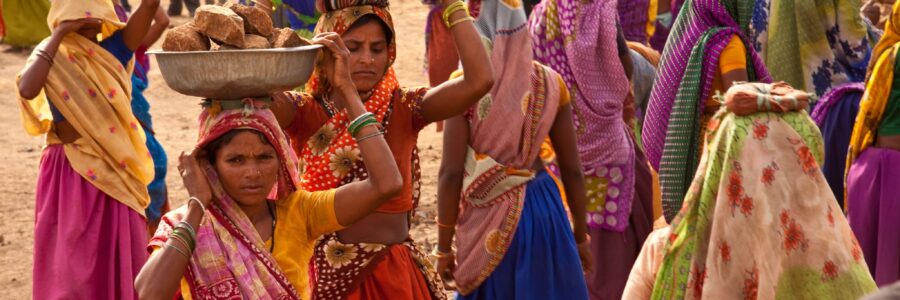The Union budget is not the only instrument for creating jobs for women in the economy, but it is certainly a significant one. To realize our ambition of a $10 trillion economy powered by ‘women-led development’, we need gender intentionality built into overall government spending.
Authors: Aparajita Bharti and Sonakshi Chaudhry
Published: February 23, 2023 in Livemint

India’s Republic Day parade this year witnessed a number of colourful tableaux from across the country celebrating ‘nari shakti’, or women’s power. This came close on the heels of the Prime Minister’s articulation of a vision for an ‘Amrit Kaal’, favourable period, powered by “women-led development”. This policy thrust is also reflected in official documents like the Economic Survey 2022-23, which spotlights the leadership of women self-help groups (SHGs) during covid and examines measurement issues in the calculation of India’s low female labour force participation rate (FLFPR).
Despite this attention, however, India’s budgetary outlays for 2023-24 stopped short of committing support to levers that could move the needle on women’s labour-force participation and empowerment. For example, as a percentage of total expenditure, the budget allotment for the ministry of women and child development has fallen from 0.64% in 2022-23 to 0.56% in 2023-24. Further, the budget heads for the ministry’s schemes changed again, making it difficult to capture year-on-year spending trends. The allocation for its Sambal schemes—including Beti Bachao, Beti Padhao, One-Stop Centres, Nari Adalats and Mahila Police—has remained the same at ₹562 crore. While the mandate of the Samarthya schemes has expanded, the budget estimate has declined from ₹2,622 crore to ₹2,581 crore. There has only been a marginal increase in the budget for Saksham Anganwadi and Poshan 2.0 (1.01%).
The Centre’s outlay for the Mahatma Gandhi National Rural Employment Guarantee Act (MGNREGA), which is significant for women’s employment in rural areas (as of December 2022, women accounted for 56% of all person-days generated under it), has reduced from ₹73,000 crore to ₹60,000 crore. The decline is steeper when compared to the 2022-23 revised estimate of ₹89,400 crore. Given that MGNREGA is a demand- driven scheme, these numbers show high demand for livelihood support but a hesitation to spend on it. Similarly, in terms of grassroot women’s leadership through SHGs, the Deendayal Antyodaya Yojana-National Rural Livelihoods Mission (NRLM) programme has only seen a slight increase of about 1.05%. On the urban front, there has been no allocation to the National Urban Livelihood Mission (NULM) and it has not been replaced by any other scheme focusing on SHGs in urban India.
Overall, this year’s gender budget outlay (as per Statement 13 of the Union budget) stands at 4.95% of total expenditure, which is marginally higher than the previous year’s initial budget estimate (4.33%). However, it must be noted that this increase is still lower than the revised estimate for last year (when gender budget accounted for 5.21% of total expenditure) as well as actual expenditure back in 2021-22 (at 5.52%).
These numbers establish that the political salience of ‘nari shakti’ has not translated to commensurate budget allocations. This is perhaps explained by the overall approach to job creation adopted in this Union budget, where the government is banking on the multiplier effect of capital expenditure on job creation and consumer demand. However, we believe there is a need to do more.
First, while it is certainly relevant, it will take time for jobs to materialize from public capital expenditure—such as the building of roads and railways, where government spending could incentivize private investment. For tendering processes to be finalized, MoUs for such projects to be signed and works to begin in earnest, the time taken could be long. To illustrate, as of August 2022, according to data from the ministry of statistics and programme implementation on infrastructure projects above ₹150 crore, 647 projects were delayed, and the reasons for time overruns reported included delays in land acquisition, obtaining forest and environment clearances, and lack of infrastructure support and linkages. In the short-term, therefore, schemes that create paid employment for women are crucial to address immediate needs.
Second, once jobs from capital expenditure are created, for women to benefit from these opportunities, quality jobs that match aspirations, skills and desired geographies will be needed. The record shows that work created in and around the vicinity, such as localized projects, are likely to be better suited to women’s circumstances. So, while capital expenditure can create jobs in general, it may create fewer of these for women than men. A recent report shows that only 12% of the workforce in the Indian construction sector is female. Therefore, an over-reliance on capital expenditure would run the risk of being a gender-blind approach to job creation. Third, capital expenditure itself could perhaps be directed towards creating more gender-responsive public infrastructure that would make it easier and safer for women to work, such as public creches, public toilets, etc, but this budget seems to have missed this opportunity.
While the Union budget is not the only instrument for creating jobs for women in the economy, it is certainly a significant one. To realize our ambition of a $10 trillion economy powered by ‘women-led development’, we need gender intentionality built into overall government spending. Why women drop out of the workforce is a complex social problem that cannot be solved just by increasing the overall supply of jobs. We need to create jobs that can be easily accessed by women and create enabling conditions like care support and other infrastructure that could help Indian women manifest their ‘shakti’.
Aparajita Bharti & Sonakshi Chaudhry are, respectively, founding partner and manager, strategic partnerships and communications, at TQH Consulting.
